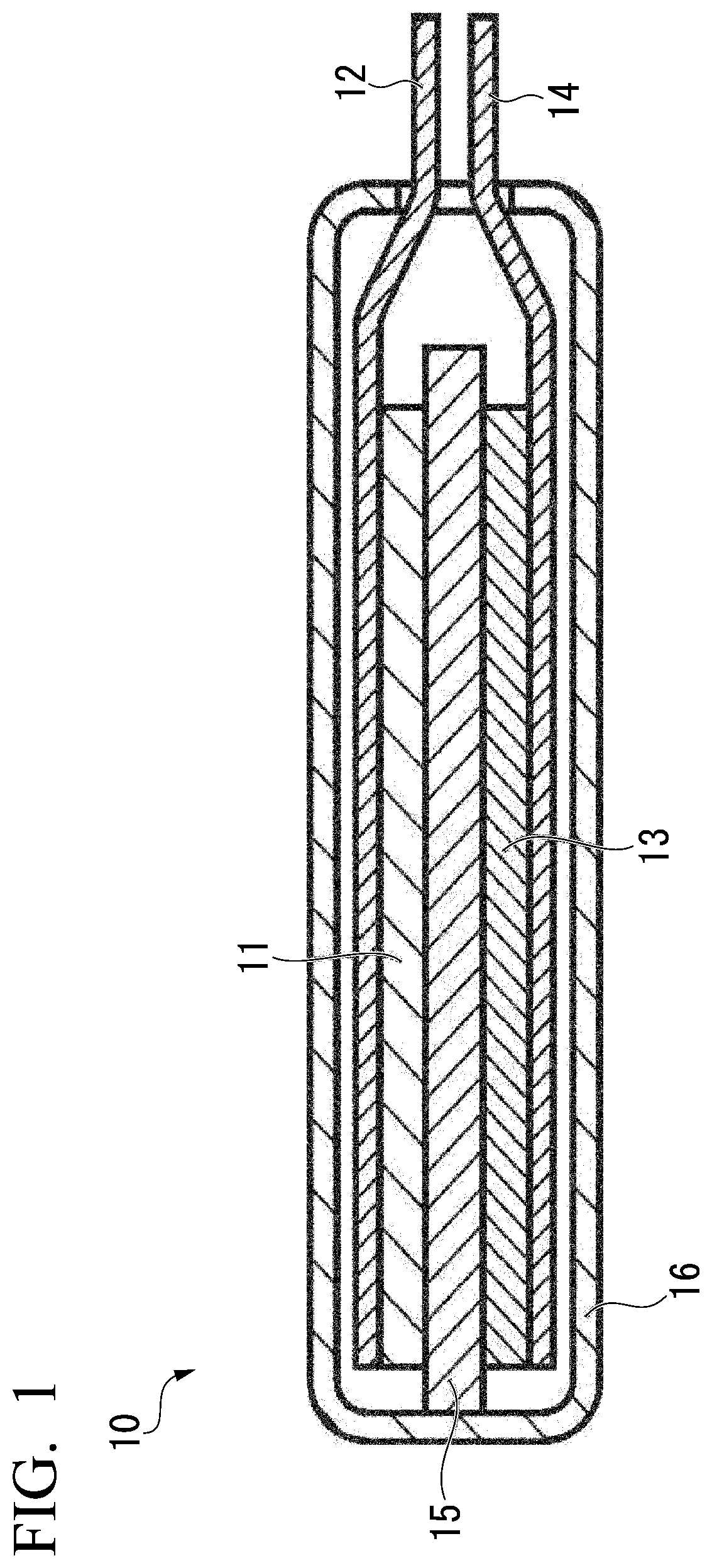Synthetic graphite material, synthetic graphite material production method, negative electrode for lithium ion secondary battery, and lithium ion secondary battery
a technology of synthetic graphite and lithium ion, which is applied in the direction of electrochemical generators, cell components, electrochemical generators, etc., can solve the problem that lithium metal is likely to be deposited on the negative electrode at a low temperature of 0°
- Summary
- Abstract
- Description
- Claims
- Application Information
AI Technical Summary
Benefits of technology
Problems solved by technology
Method used
Image
Examples
example 1
[0159]Desulfurized vacuum gas oil (sulfur content of 500 mass ppm, density of 0.88 g / cm3 at 15° C.) was subjected to fluid catalytic cracking, thereby obtaining fluid catalytic cracking residual oil (hereinafter, referred to as “fluid catalytic cracking residual oil (A)”). The initial boiling point of the obtained fluid catalytic cracking residual oil (A) was 200° C., the sulfur content was 0.2% by mass, the nitrogen content was 0.1% by mass, and the content of the aroma component was 65% by mass.
[0160]Next, desulfurized vacuum gas oil (sulfur content of 500 mass ppm, density of 0.88 g / cm3 at 15° C.) was subjected to fluid catalytic cracking, thereby obtaining light cycle oil (hereinafter, referred to as “fluid catalytic cracking gas oil (A)”). The initial boiling point of the obtained fluid catalytic cracking gas oil (A) was 180° C., the final boiling point thereof was 350° C., the content of the asphaltene component was 0% by mass, the saturated content was 47% by volume, and the ...
example 2
[0184]Cracking gas oil (sulfur content of 0.2% by mass, density of 0.92 g / cm3 at 15° C., saturated content of 36% by volume, aroma component content of 64% by volume, asphaltene component content of 0% by mass, initial boiling point of 220° C., final boiling point of 340° C. (hereinafter, referred to as “coker cracking gas oil (A)”) which was gas oil obtained by the delayed coking process was mixed with the fluid catalytic cracking residual oil (A) and the fluid catalytic cracking residual oil (B), which were heavy oils, at a mass ratio of 30:50:20, thereby obtaining a raw material oil composition of Example 2. The content of gas oil in the raw material oil composition of Example 2 is listed in Table 1.
[0185]The raw material oil composition of Example 2 was subjected to a coking treatment for coking in the same manner as in Example 1, thereby obtaining a coking coal composition.
[0186]The obtained coking coal composition was pulverized with a hammer type mill such that the average pa...
example 3
[0192]Desulfurized gas oil (density of 0.90 g / cm3 at 15° C., aroma component content of 25% by volume, asphaltene component content of 0% by mass, initial boiling point of 180° C., final boiling point of 350° C. (hereinafter, referred to as “desulfurized gas oil (A)”)) which was gas oil obtained by a gas oil desulfurization device was mixed with the fluid catalytic cracking residual oil (A) and the fluid catalytic cracking residual oil (B), which were heavy oils, at a mass ratio of 15:40:45, thereby obtaining a raw material oil composition of Example 3. The content of gas oil in the raw material oil composition of Example 3 is listed in Table 1.
[0193]The raw material oil composition of Example 3 was subjected to a coking treatment for coking in the same manner as in Example 1, thereby obtaining a coking coal composition.
[0194]The obtained coking coal composition was pulverized with a hammer type mill such that the average particle diameter measured by a laser diffraction type partic...
PUM
| Property | Measurement | Unit |
|---|---|---|
| size | aaaaa | aaaaa |
| wavelength range | aaaaa | aaaaa |
| boiling point | aaaaa | aaaaa |
Abstract
Description
Claims
Application Information
 Login to View More
Login to View More - R&D
- Intellectual Property
- Life Sciences
- Materials
- Tech Scout
- Unparalleled Data Quality
- Higher Quality Content
- 60% Fewer Hallucinations
Browse by: Latest US Patents, China's latest patents, Technical Efficacy Thesaurus, Application Domain, Technology Topic, Popular Technical Reports.
© 2025 PatSnap. All rights reserved.Legal|Privacy policy|Modern Slavery Act Transparency Statement|Sitemap|About US| Contact US: help@patsnap.com

